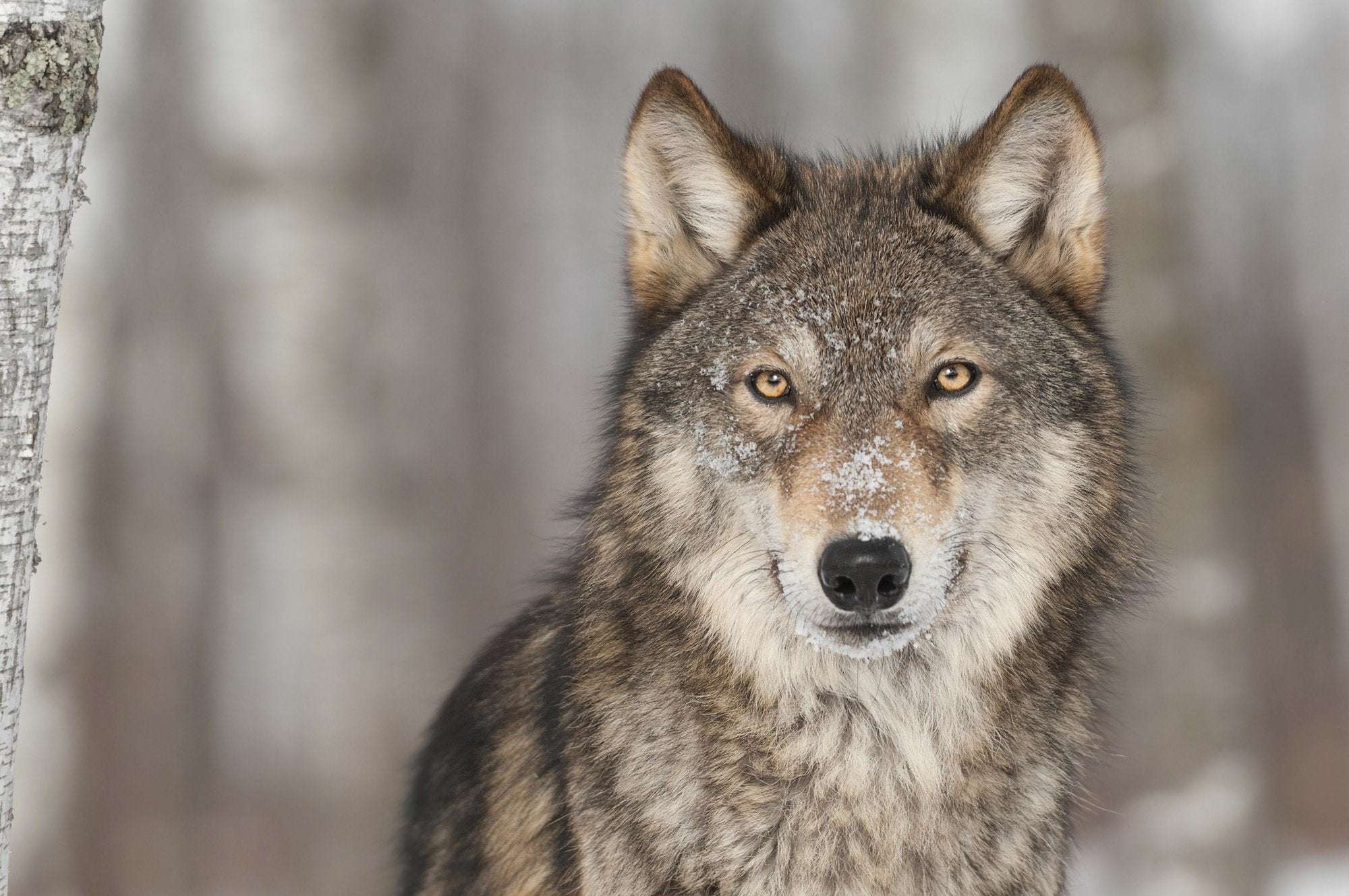Wolves and Ravens – Nature’s Odd Couple
The wolf’s effective hunt of large prey and striking, soulful appearance have attracted both haters and lovers of this wild predator.
Wolves were so despised that the U.S. government established a bounty program that helped to eliminate all but a few hundred wolves in the United States by the 1930s. But thanks to the Endangered Species Act, the wolves are successfully being reintroduced to their place in nature, and it is the raven who loves its new ecosystem partner.
Much like their human counterparts, ravens and wolves have formed a mutually beneficial relationship in which they seem to both respect and engage each other in playful activities.
Although many animals benefit from a wolf pack’s kill of an elk or deer, the ravens are first on the scene. Yellowstone National Park biologists have closely studied the gray wolves which were reintroduced to Yellowstone in 1995 and found that it is the raven who has benefited the most from the wolves. The average number of ravens present at a wolf kill is 30 – and up to 135 have been recorded to eat from the leftovers. Adirondack Wildlife, Inc. has reported a new study suggests that the real reason wolves hunt in packs is “to minimize the portion of a carcass lost to ravens!” These birds constantly carry away chunks of meat and can steal up to one-third of an animal carcass.
While it may appear that the ravens just take advantage of the wolves, Bernd Heinrich, author of Mind of the Raven: Investigations and Adventures with Wolf-Birds, writes that the ravens repay their wolf benefactors: “At a kill site, the birds are more suspicious and alert than wolves. The birds serve the wolves as extra eyes and ears.”
Ravens may also lead wolves to animal cadavers or to nearby prey. It is believed that the wolves may respond to the ravens’ calls or other behavior that indicates food. Sometimes when the ravens fly, the wolves will follow. Ravens have even been observed leading wolves to animal carcasses too tough for the ravens to penetrate with their strong, sharp beaks.
When not competing for their next meal, wolves and ravens also play with each other. Observers have seen ravens dive at the wolves and then quickly fly away. Ravens may peck at the wolves’ tails to get the wolves to chase them, or the ravens may be teased themselves by wolf cubs chasing after them.
While their relationship with ravens has certainly produced an odd couple in nature, wolves have also created a staggering effect on the natural ecosystem as a whole. The Yellowstone National Park wolf restoration program has been intensively studied and the wolves have provided a greater understanding of the importance of their role as a predator in maintaining the integrity of the entire ecosystem. They remind us that “in nature everything is connected to everything else” (from “The Wolves of Yellowstone,” Brooks/Cole division of Thomson Learning, Inc.).
Be amazed by other wolf activity seen in the video “How Wolves Change Rivers”. Want to observe these fascinating creatures firsthand? Check out these 5 ecology careers to get you outside.

peacehippo84 on November 22nd, 2020 at 18:19 UTC »
I can absolutely confirm this weird connection between Ravens and Canine fam.
I used to work pretty far up north in Canada drilling and blasting in an open pit quarry. There was a "quarry" dog, snagle toothed, no owner, god knows how old. There was also a pit Raven. In the bottom of the pit at lunch they would both get fed scraps.
It seemed the pit dog did not like to eat cheetos for whatever reason but didnt want to give them up right away to the raven. The dog would approach the chetto at about 5 feet, the raven would do the same on the other side. The dog would move one foot forward, the raven one foot back. Dog would back up one foot, the raven moved forward 1 foot.
It was like a dance, the dog clearly did not want to harm the Raven, just enjoyed the company.
R4DAG4ST on November 22nd, 2020 at 16:48 UTC »
This explains a lot! We do a lot of outdooring with our dogs and it's very common to have ravens "play" with our dogs, even so much as one time when we were overlanding we had a raven follow the trucks for the better part of two days, interacting with the dogs at every stop.
Who knew?
cslogin on November 22nd, 2020 at 15:32 UTC »
New insight into Game of Thrones.